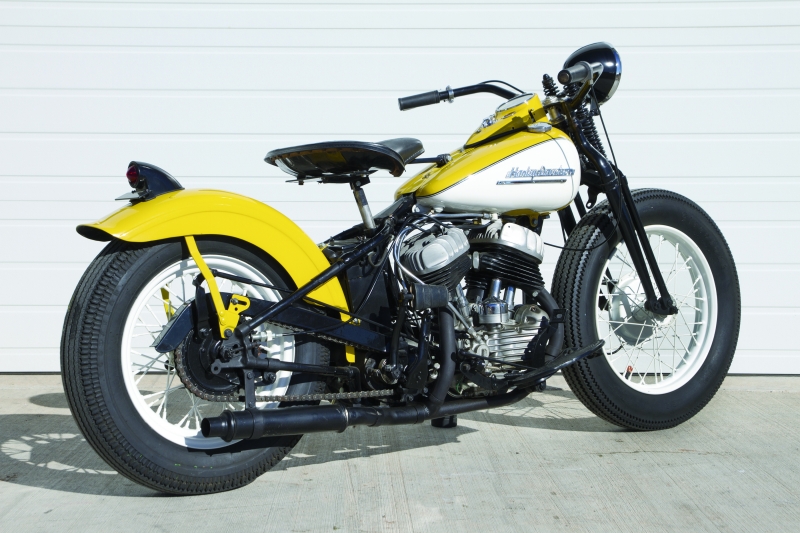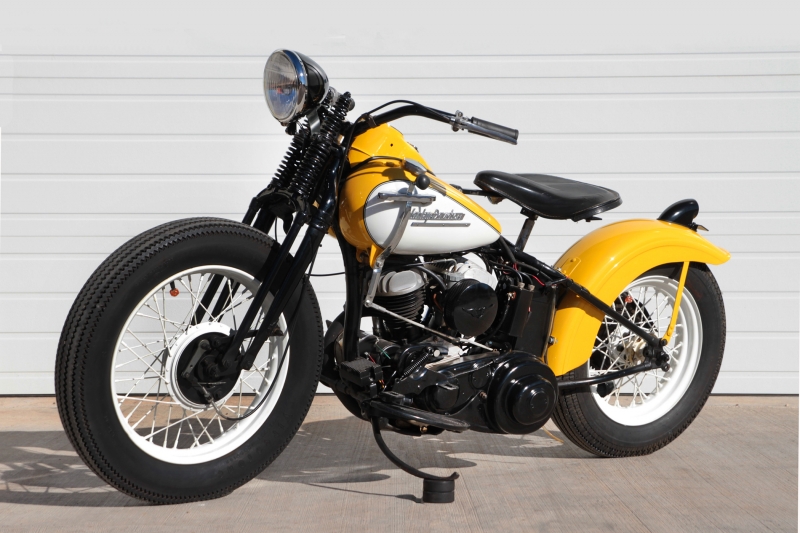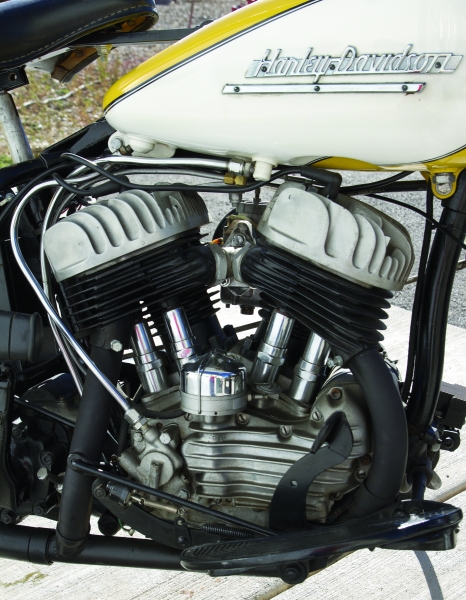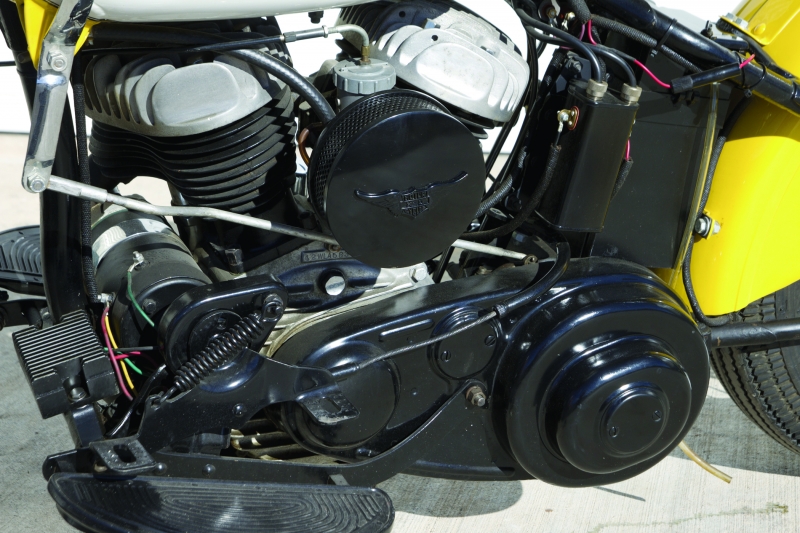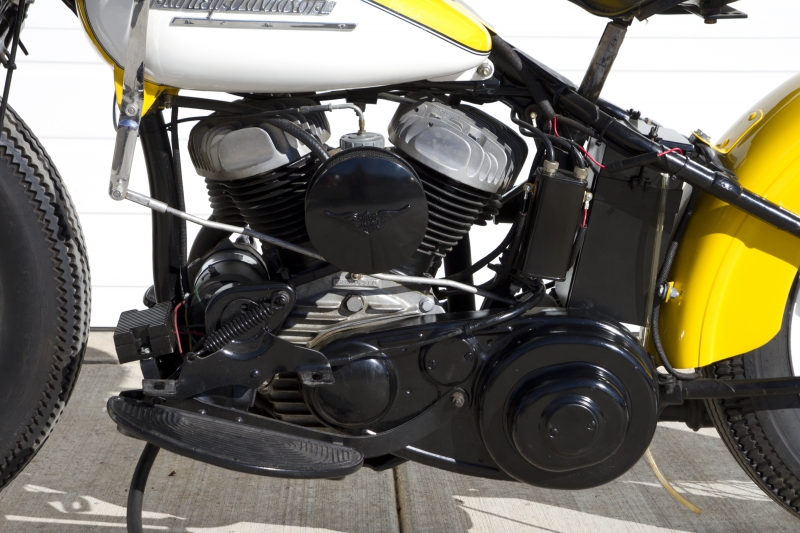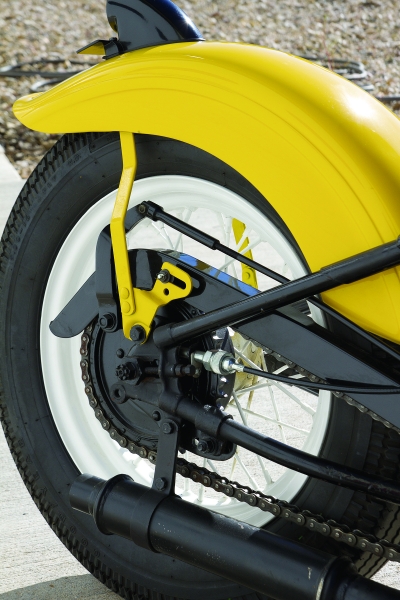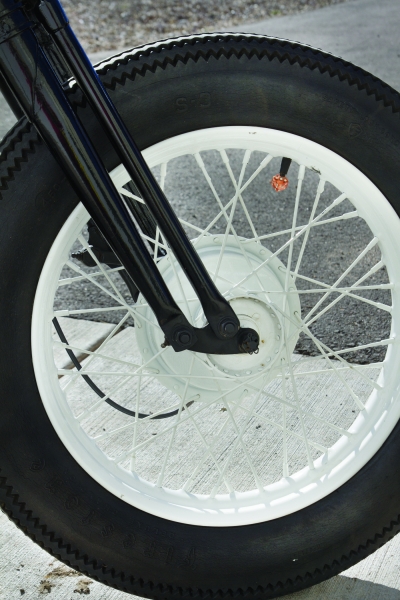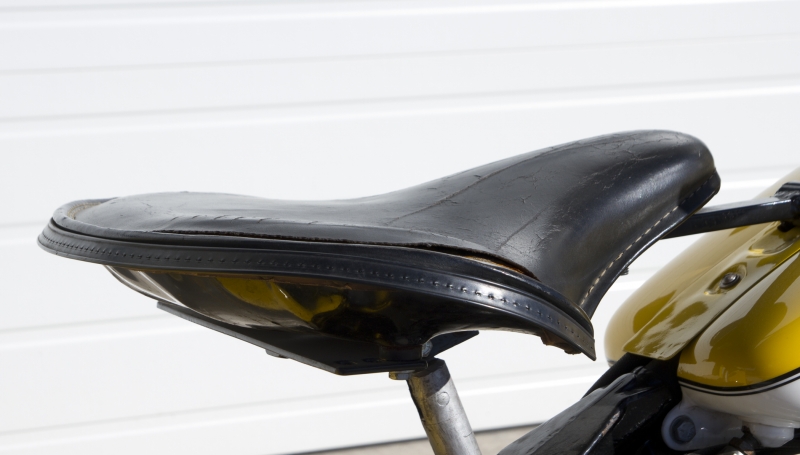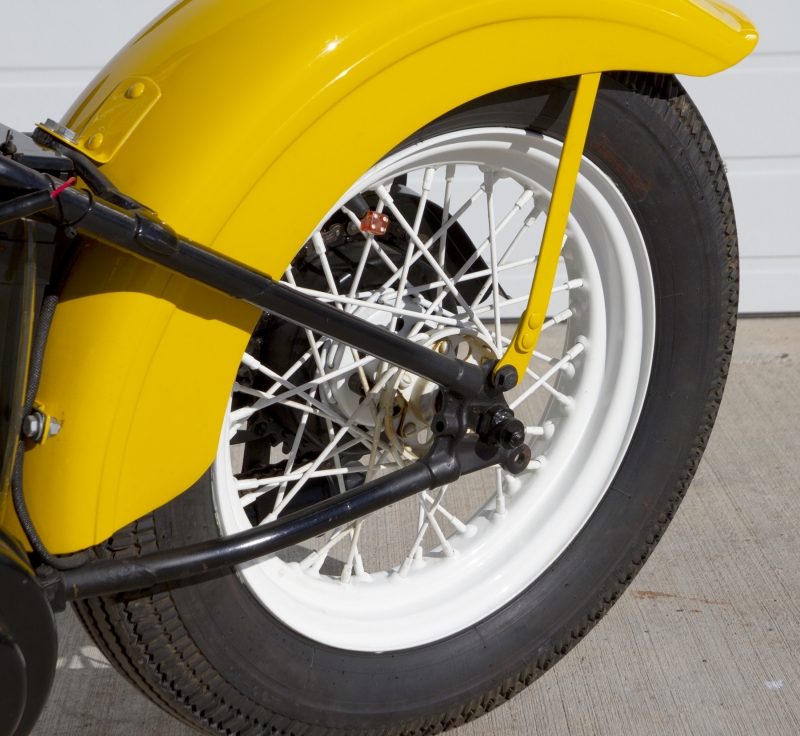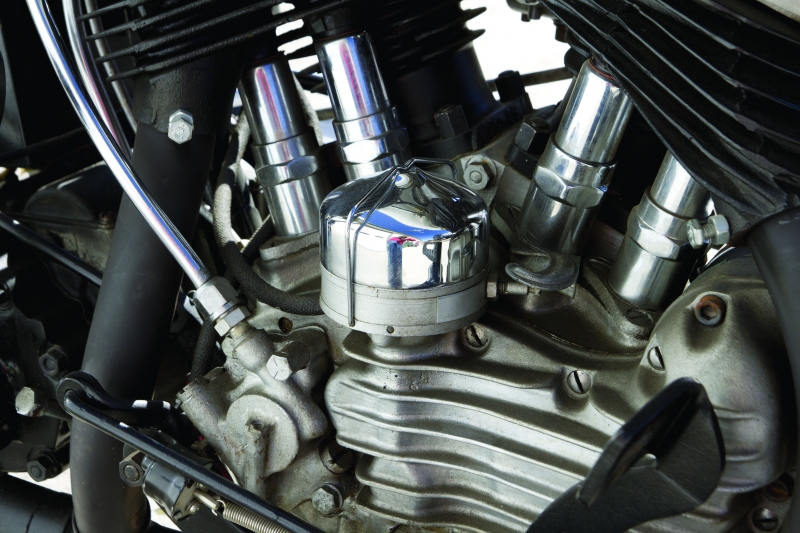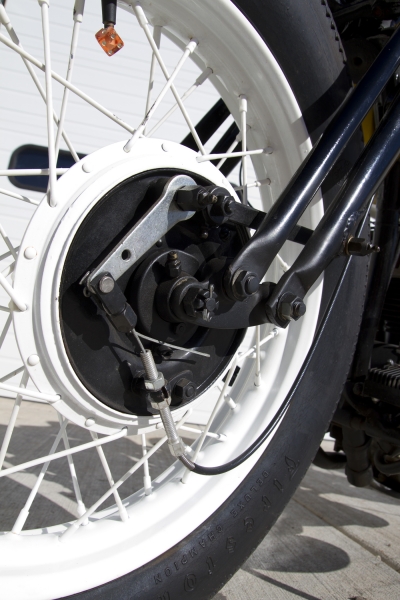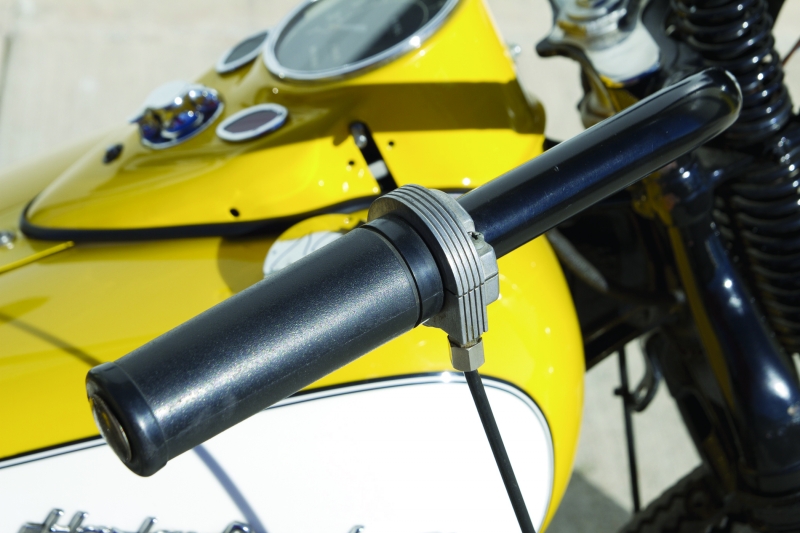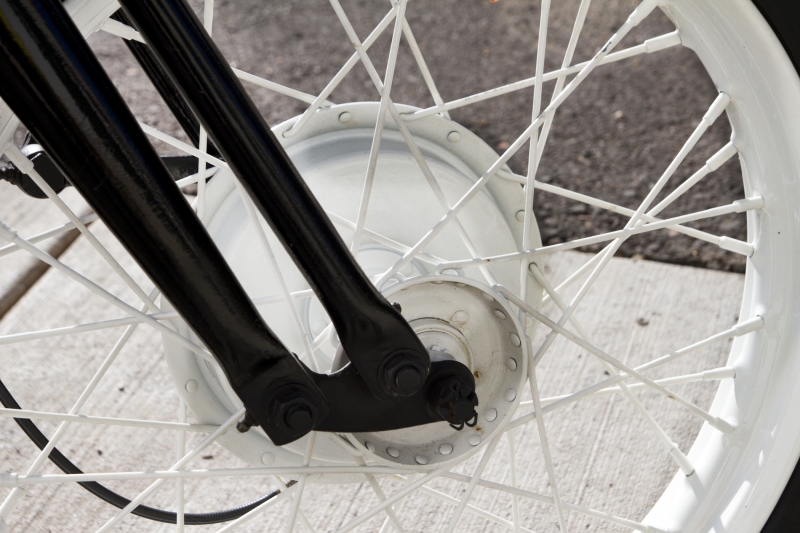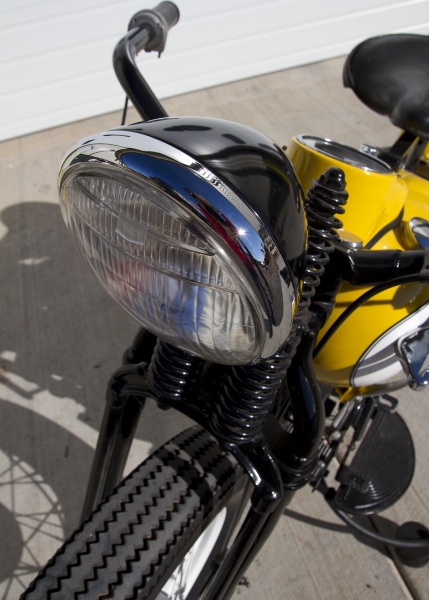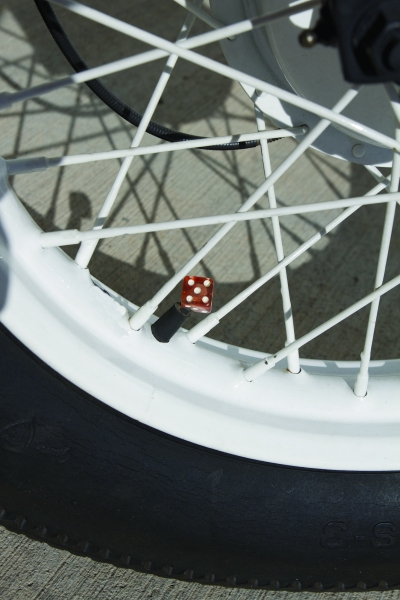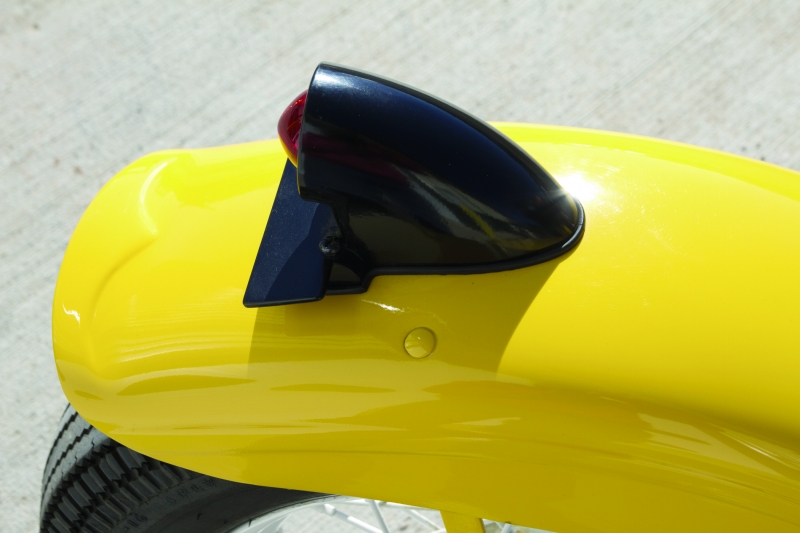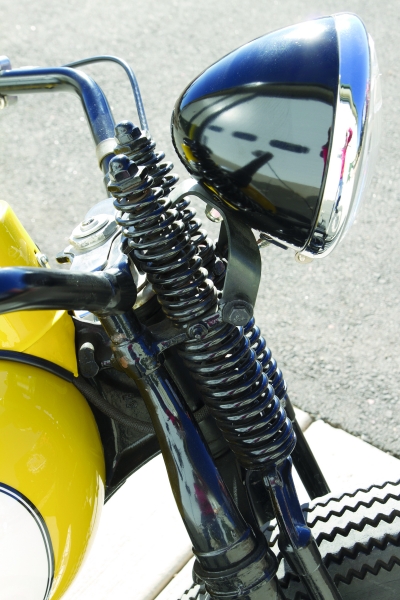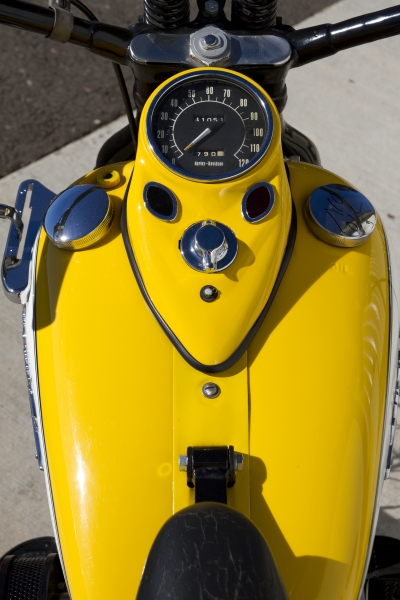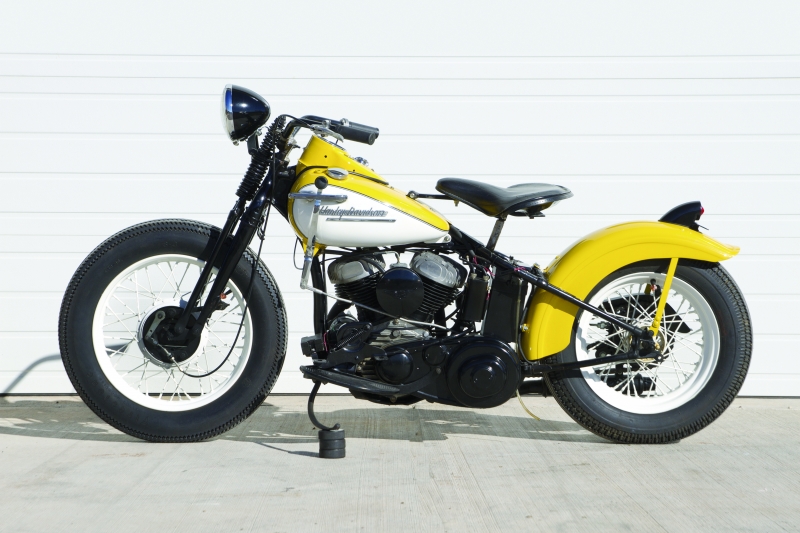More Issues
- August 2023
- September 2021
- August 2021
- July 2021
- June 2021
- May 2021
- April 2021
- March 2021
- February 2021
- January 2021
- December 2020
- November 2020
- October 2020
- September 2020
- August 2020
- July 2020
- May 2020
- April 2020
- March 2020
- February 2020
- January 2020
- December 2019
- November 2019
- October 2019
- September 2019
- August 2019
- July 2019
- June 2019
- May 2019
- April 2019
- March 2019
- February 2019
- January 2019
- December 2018
- November 2018
- October 2018
- September 2018
- August 2018
- July 2018
- June 2018
- May 2018
- April 2018
- March 2018
- February 2018
- January 2018
Old Yeller
By: Buck Lovell Photos By: Buck Lovell
Way back when political correctness had yet to rear its ugly head, motorcycle riding was the venue of a select crowd of rough and ready men and even a few rough and ready, excitement craving women. Most motorcycles in America in the early 1950s were no nonsense, kick-start only iron with few if any of the frills or comfort features we have today. America’s modern super-speed interstate highway system wasn’t even a twinkle in President Eisenhower’s eye, and gasoline was less than 15 cents per gallon almost everywhere across the Unites States. Two-wheeled motorcycles were economic, fair-weather transportation for those men and women who loved the sun on their face and the wind in their hair!
No one can possibly ever know exactly when the first Harley-Davidson or Indian motorcycle became a custom chopper or bobbed street machine, but it is most likely that the stripped street bike trend started during the 1950s – at least that’s the most popular theoretical consensus. Young, boisterous, motorcycle riding men had recently returned from wartime duty in either the European Theatre or Pacific Theater and were riding American war surplus machines that were inexpensive and plentiful. Local small town motorcycle race tracks with dirt or clay surfaces attracted hundreds of thrill-seeking spectators. Those young men were eager and unafraid to risk their necks for a few dollars and a small, dingy but shiny trophy on any weekend they weren’t working. Most of the motorcycles competing in these local events were actually driven to the race track in street form, then laboriously stripped of all unnecessary street equipment. They were driven in competition on dry dusty dirt tracks, only to have that same street equipment reinstalled for the ride home. My personal theory is that on many occasions that street equipment somehow did not get re-installed. Perhaps the rider decided that the stripped version was just plain faster and more fun to ride without all that extra weight. Just a theory but it works for me.
The motorcycle seen here is a 1942 Harley-Davidson WLA belonging to Kenny Price, founder and owner of Samson Exhaust. Kenny purchased this machine 12-13 years ago. Historical facts about the origin of this machine are scarce, but Kenny told me he purchased this vintage two-wheeler after seeing it for sale on eBay. It is unknown who actually built the thing, but whoever did seemed to want to emulate the kind of motorcycle that was probably seen in the mid-1950s. Take a long, studious look at the machine. If you’ve been riding motorcycles for more than 30 years you might think, “That’s just a Harley-Davidson flathead 45. No power, I’d rather ride an overhead valve machine.” My mindset was exactly like that 30 years ago when I was just starting my riding career. Times have changed and so has my thinking and opinion when it comes to two-wheeled things. When I look at this motorcycle with my now somewhat experienced and mellowed riding perspective, I see a machine I would love to ride almost anywhere just for fun. At first glance it looks to be a genuine example of one of the early chopper, bobber motorcycles of the early 1950s, but a longer look reveals the modern electrical equipment installed, which contradicts that initial assessment.
This Harley-Davidson motorcycle is either a chopper or bobber depending upon your point of view. You say tomato, I say tomotto. Bobber or chopper...I like it! War surplus Harley-Davidson WL and WLA model 45-cubic-inch motorcycles were very reliable when treated to a regular maintenance routine and not abused. The machine pictured here has aluminum cylinder heads installed, which results in a cooler running motor when compared to the standard cast iron cylinder heads. The rear wheel brake is mechanically actuated, as is the front brake. A modern solid state voltage regulator receives charging voltage from a late style two-brush generator and delivers it to the battery. The tungsten filament headlight is OEM Harley-Davidson, no LED thingy here. An unmodified Harley-Davidson single downtube rigid frame keeps everything organized. A three-speed gearbox was/is standard with an option three-speed reverse available for the three-wheeled 45 used by parking enforcement personnel of many municipal police departments. The foot clutch is of the “toe down engaged” variety, whereas Indian motorcycles were exactly the opposite, functioning as toe-down disengaged units. Harley-Davidson WLs were/are perfect for Black Hills South Dakota riding out on miles and miles of non-paved county roads. The fat 5:00 X 16 wheels and tires have a large contact patch. The Springer front fork is perfect for dirt riding, not being afflicted by the “stiction” characteristics of a hydraulic-tube front end. Smooth comfortable riding is supplied by that big butt tractor seat common to a rigid frame machine as stock. Oh yeah I almost forgot, that tail light is a Crocker manufactured component that looks awesome here, putting out plenty of light given the twelve conversion the electrical system has experienced.
Kenny Price’s yellow bobber sold for above $15,000 at a recent Mecum auction. I consider this an astounding amount of money for a motorcycle that may have been purchased for less than $50.00 when originally sold to the public. It is what it is, and the buyer here got his money’s worth. If you’re looking to build a motorcycle resembling a vehicle of the late 1950s or early 1960s, this may be a good machine to use as a reference. Good luck in your search for early Harley-Davidson WLA or WL parts, they are becoming very scarce unless of course you know where to look!

